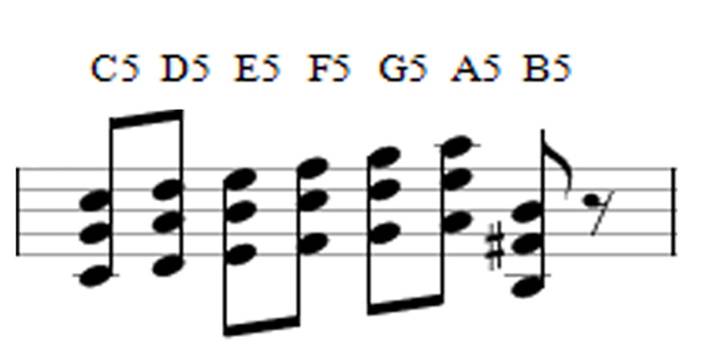Highlights
So comes up the time in your guitar lessons
when the requirement is to train over power chords? What definite learning approach you plan to adopt in this regard? Holistically depending upon the teacher’s ‘say’ and devotedly pursuing each technique taught by the one?
While the mentor’s adept guidance is indispensable for accomplishing actual expertise over these chords, won’t possessing some real-time effective ‘wisdom’ over power chords, prior to the lesson’s initiation, appear most ‘welcoming’ to you?
Will be –
- Highly helpful to keep perfect pace with own instructor’s progressing strategy
and
- Follow, more productively, each new step of learning at class, correct?
Then you have engaged with the right write-up. In a much smartened (& integrated) style, it brings into limelight those exactly vital aspects of power chords – that make you emerge savvier than any other batch mate at the very first day of lesson.
Involve Into the Learning Ride Pronto
- By the theoretical sense, each of these is not a chord in essence – but one twosome comprising two notes.
- A root note and the fifth note within a major scale make up the ‘coupling’ texture of a power chord. Veteran guitar classes
are prone to identify this ‘5th‘ aspect as the fifth interval note. - As they are devoid of any 3rd note in the scale based upon, power chords possess neither major nor minor traits.
- In the tab sheet, they are identified by the symbol ‘5’ adjacent to a root note. Example – A5, D5
- The adept and pro style of playing them is through the 3 fingers (index, middle and ring) and therein creates a highly voluminous acoustic.
- However, students are always advised to practice via their 2 digits only. The ‘hack’ permits them to interchange between the power chords with impeccability and swiftness. Simply remember to omit the root note that ‘sits’ one octave higher.
- Mostly strummed by the 5th and 6th strings, power chords are of complete moveable shapes and can be experimented over any fret and each corresponding note – only if you can memorize the fret-board by heart.
- Amidst the 12 existing types, D5, E5, A5 (open position), F5, Bb5 (moveable) and C5, G5 are the most popularly taught and explored sorts.
- Rarely, but few power chords consist of second root note – in where the 5th interval notation will be replaced by an 8th one like C8 in place of C5.
USPs Inherent to Power Chords
As voices one senior groomer at Stradivari Strings, these chords appear as true blessings for strumming rock and heavy metal symphonies.
You have heard about the distortion tactic essential to rock music, right? Pro guitarists resort to the ‘hack’ for creating full-scale acoustics. However, when played through the standardized open chords, the distortion or ‘fuzz’ turns way too louder – eventually overshadowing the actual chord rhythm.
Moreover, the beat transformation remains non-linear (since over 3 notes are plucked simultaneously) that in effect produces a somewhat jarring sound for listeners to hear.
Given to the presence of only two notes in the 3:2 sequence, power chords lessen the non-linear agony and ‘allow’ every additionally generated beat abide by the timbre of two notes.
And, what highlight the noteworthy guitar classes Singapore, the technical texture produced from the ‘mix’ of root and fifth note let distortion resonate by utmost clarity and richness.
Along with this so-vital perk, the other traits include –
- Enriched playability over riffs and fast-paced tempos
- Adept depth to root notes
- Heightened intensity and harmonic effect at low beats
- More melodious plucking of high notes in solo pieces
- Vital to ceate Punk Rock music with doubled-up passion and force (just add an octave to the chords)
Expert Advice to Practice Them
Quite hard and complex it will be get to practice all 12 of the chords at this intermediate stage of learning?
Well, in the opinion of an eminent guitar teacher Singapore, for students advancing from the beginners to the ‘next’ educational level, exercising over the ‘popular 7’ (refer to point no 8) is well-enough.
Acquire an aptly clear notion over the ‘how-to-s’ of practicing these by paying heed to the master tips right here –
A5
- Begin with the root note in 6th string by having your first index at the 5th fret
- Now, touch the A string’s 7th fret through the 3rd finger
- Play these two notations simultaneously to accomplish an apt power chord
- If to initiate from the 5th string, keep the first finger at D string’s 2nd fret
- Strum that in inclusion of an A open string
Bb5
- Reach out for the low E string
- Place the first digit over its 7th fret
- Now have your third finger on A string’s 9th fret
- Strum the chord
- As for beginning with the 5th string, the first index requires to be at A string’s 2nd fret and third digit upon D string’s 4th fret
C5
- Your first digit should be over low E string’s 8th fret
and
- 3rd index at A string’s 10th fret
When to include a C notation of 1 high octave, have the 4th finger on D string’s 10th fret.
D5
- Pluck low E string’s 10th fret by the first index
- In sync, your 3rd finger must be at A string’s 12th fret
As voice those celebrated guitar classes Singapore, for D5, it is much vital to mute strings 1, 2 and 6 while strumming.
E5
- 1st digit < A string’s 2nd fret
- To strum in association with an open and low E string
- When availing the 5th string, have the 1st finger on A string’s 7th fret, while the 3rd digit is upon D string’s 9th fret
Do not forget to play the 6th string in open style throughout.
F5
- Rule is to position the first finger on low E string’s 1st fret and settle the 3rd digit on A string’s 3rd fret
- And, for practicing through the 5th string, get the first index on A string’s 8th fret and third digit on D string’s 10th fret.
To accomplish an octave up F note, down press G string’s 10th fret through your 4th finger.
G5
- 1st digit upon 6th string’s 3rd fret and 3rd index at A string’s 5th fret
Or
- 1st finger on 5th string’s 10th fret and 3rd digit over D string’s 12th fret
- Strings 1,2,3 & 4 (as well) must be muted
In Addition, Be Aware to –
- Play only the notations you are fretting – since quite-a-much power chords are devoid of open strings
- Sway through the 4th/pinky finger while strumming a power chord to infuse diversity and finesse to it
- Always keep the 3rd digit two frets up (below string) from the root note or first finger
- Try, often during practice, to alter from one power chord to the other and play them in sync with open chords – on dedicated training evolves your spontaneity over song picking
(# 1 = index finger, 3 = ring finger, Finger = Digit/Index)
Pluck Perfect through Power!








